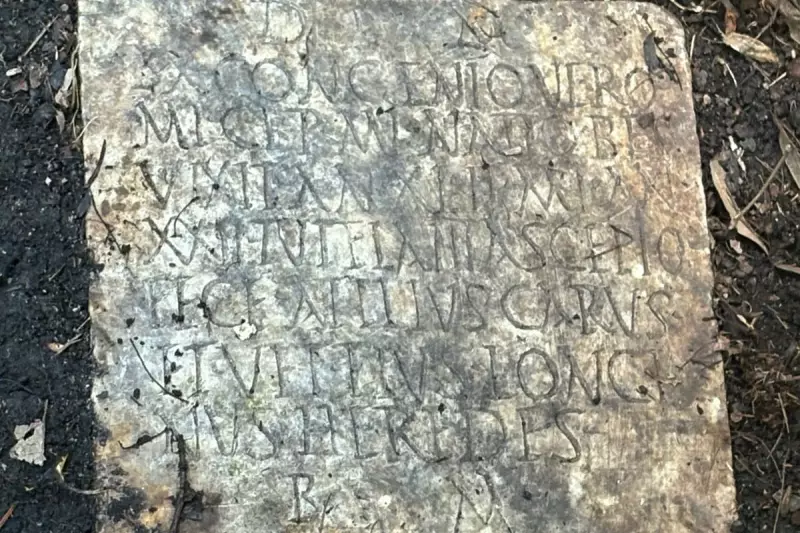
In an extraordinary discovery that has left archaeologists both thrilled and perplexed, an authentic Roman headstone dating back approximately two millennia has been unearthed in New Orleans—thousands of miles from where it was originally created.
The ancient marble slab, measuring roughly 22 by 15 inches and weighing nearly 50 pounds, was found during landscaping work near the Crescent City's riverfront. What makes this find particularly baffling is that the headstone appears to have been buried for decades, possibly longer, creating a historical mystery spanning continents and centuries.
The Epitaph That Crossed Oceans
Experts who have examined the artifact confirm it bears a genuine Roman inscription commemorating a ten-year-old boy named Abdigildus, who served as a verna, or household slave, to a cavalry officer in the Roman military.
The carefully carved Latin text reads: "To the divine shades of Abdigildus, verna, who lived 10 years. C(aius) Verius Saturninus, decurion of the squadron of the Vocontii, [set this up] to his well-deserving vern(a)."
An Archaeological Detective Story
Archaeologists from the University of New Orleans are now faced with unraveling how this ancient Mediterranean artifact made its way to the American South. The headstone's journey represents one of the most unusual archaeological puzzles in recent memory.
Dr. Ryan Gray, who leads the archaeological analysis, described the moment of recognition: "My first reaction was that it can't be what it looks like, but it very quickly became clear that it was a genuine Roman period inscription."
Possible Explanations for the Transatlantic Journey
Researchers are exploring several theories about how the headstone reached Louisiana:
- 19th-century ballast: Ships often used heavy stones as ballast, which were sometimes discarded in foreign ports
- Private collection: The artifact may have been part of a wealthy individual's antiquities collection
- Archaeological souvenir: Possibly brought back by someone traveling from Mediterranean regions
The headstone's weathered condition suggests it was displayed outdoors for some time before being buried, adding another layer to its complex history.
Continuing the Investigation
Archaeological teams are now conducting further excavations at the discovery site, hoping to find additional clues about how this piece of ancient Rome ended up in New Orleans. The headstone has been carefully transported to a laboratory for detailed analysis and preservation.
This remarkable find serves as a powerful reminder that history has a way of surfacing in the most unexpected places, connecting modern Louisiana to the ancient Roman world in ways nobody could have anticipated.





